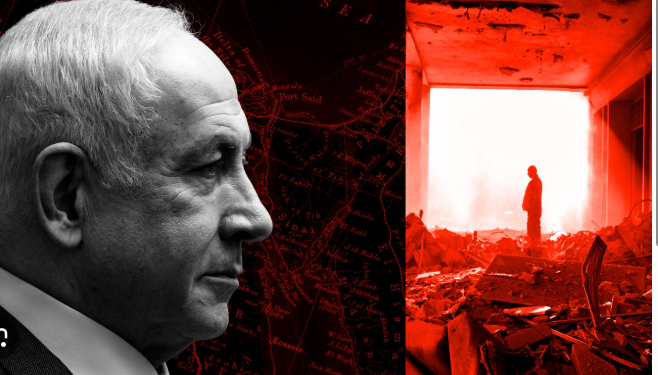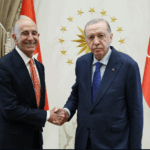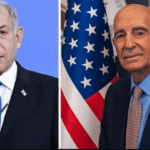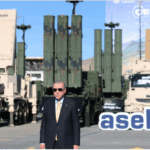As Israeli warplanes pounded Damascus and smoke rose over the Syrian presidential palace, one phrase reverberated through the West Wing: “Bibi is out of control.” According to a White House official speaking to Axios, Trump’s inner circle is “deeply alarmed” by Prime Minister Benjamin Netanyahu’s latest military campaign. “He bombs everything all the time,” the official said. “It’s madness. This could completely derail what Trump is trying to do.”
The statement, once unthinkable in a U.S. administration known for its unwavering pro-Israel stance, now marks a dramatic turning point. The Trump-Netanyahu alliance—once built on shared ideological bravado and transactional loyalty—is crumbling under the weight of conflicting regional visions.
A Fracture Years in the Making
While the Syria escalation brought the rift into public view, tensions between Donald Trump and Benjamin Netanyahu had been quietly festering for years. During Trump’s first term in office, the two leaders appeared inseparable. Trump handed Netanyahu a series of historic diplomatic wins—from recognizing Jerusalem as Israel’s capital and relocating the U.S. embassy, to recognizing Israeli sovereignty over the Golan Heights, greenlighting settlement expansion, and brokering the Abraham Accords. The alliance was so close that Netanyahu featured in Trump’s 2020 reelection campaign ads.
But when Trump lost the 2020 election, the political honeymoon ended abruptly. Netanyahu was one of the first world leaders to congratulate Joe Biden on his victory—before Trump had conceded or even acknowledged the result. That act of protocol was perceived by Trump as an unforgivable betrayal.
“F*** him,” Trump reportedly said in a December 2021 interview with Israeli journalist Barak Ravid. “He was very early. Like earlier than most. I haven’t spoken to him since. F*** him.” Trump’s fury was raw, and it lingered.
In early 2025, just days before being sworn in for a second term, Trump shared a YouTube video featuring U.S. economist Jeffrey Sachs, who referred to Netanyahu as a “deep, dark son of a bitch” and accused him of engineering “endless wars” in the Middle East. The timing was not accidental—a coded signal from Trump that his patience was exhausted.
From that point on, their relationship shifted from fraternal to purely transactional. Trump continued to support Israel as a state, but his trust in Netanyahu—whom he once saw as a kindred strongman—was shattered. Trump increasingly saw Netanyahu as someone willing to exploit war and instability for personal political gain, particularly as the Israeli prime minister faced a series of corruption investigations and repeated elections.
That suspicion metastasized in June 2025 after Israel launched unauthorized airstrikes on Iran, targeting nuclear facilities and killing senior military officials and scientists. The surprise operation infuriated President Trump, who had just overseen a delicate U.S.-Iran détente. In an unprecedented move, Trump authorized limited U.S. strikes on Iran’s nuclear infrastructure—not to escalate the conflict, but to undercut Netanyahu’s rationale for war and to assert American control over the de-escalation process.
In response, Iran retaliated against U.S. positions in Qatar, reportedly with the knowledge of the United States, as an effort to save face. Meanwhile, Israel continued its direct strikes on Tehran. Shortly after, Trump facilitated a ceasefire between Israel and Iran, labeling it “unlimited” and suggesting that it would last “forever.” However, just hours later, the truce fell apart.
Speaking to reporters before departing for the NATO summit in the Netherlands, Trump exploded in frustration: “We basically have two countries that have been fighting so long and so hard that they don’t know what the f— they’re doing.” While blaming both sides, he reserved his harshest criticism for Netanyahu. “I don’t like the fact that Israel went out this morning at all, and I’m going to see if I can stop it,” he said, adding, “I’m not happy with Israel… and I told Bibi: You gotta call back the planes. It’s enough. And they did, which I respect.”
Trump’s anger was not merely rhetorical—it marked a critical rupture in the decades-long U.S.-Israel security consensus and exposed the growing personal and strategic rift between Trump and Netanyahu.
He’s a Madman”: Syria Exposes the Final Rift
Then came Syria. In mid-July, Israeli warplanes launched an aggressive aerial campaign across southern Syria, targeting military installations in Damascus and Suwayda following escalating violence between government forces and Druze defense groups. Israel also struck the Hamon Square area near the presidential palace in Damascus—including the Defense Ministry and the General Staff headquarters—sending powerful shockwaves across the Syrian capital.
Inside the White House, the reaction was immediate and severe. Trump was reportedly furious, feeling blindsided by Netanyahu’s decision to greenlight the strikes without consultation. A senior official described Netanyahu as acting irrationally—“a madman” who “bombs everything all the time.” The concern was not only moral but strategic: Netanyahu’s unilateralism was seen as a reckless gambit that risked unraveling Trump’s broader diplomatic blueprint for the region.
Axios reports that Trump personally called Netanyahu to express his anger and demand a halt to the bombings. White House Press Secretary Karoline Leavitt later confirmed the call, noting that Trump wanted Netanyahu to “rectify” the situation. In the words of another senior official, Netanyahu is acting like “a misbehaving child,” unable or unwilling to grasp the new American strategy: stabilization, not perpetual war.
U.S. Special Envoy Thomas Barak flew to Beirut to manage the fallout. At first, Barak echoed Israeli talking points, blaming the violence on Syrian regime remnants. But within 48 hours, he reversed his stance. In an extraordinary diplomatic about-face, Barak reaffirmed American support for Syrian sovereignty and criticized Israeli threats to dismantle Hay’at Tahrir al-Sham (HTS) and its allied tribal militias. He emphasized that Washington viewed these groups—not as terrorist actors—but as stabilizing forces in the new post-Assad order. Barak openly stated that Israel’s actions suggested a preference for a fractured, unstable Syria over a unified, centralized state
Israel’s Vision: Chaos as Strategy
Netanyahu’s aggression is not just about tactical deterrence. It reflects a deeper strategic logic—one that aims to use instability as a weapon. At the heart of this effort is the so-called “David Corridor”: a plan to carve out an Israeli-controlled military and logistics pathway from the Golan Heights through southern Syria to the Iraqi border. For Israel, a fragmented Syria is preferable to a strong, centralized state capable of resistance. This is not conjecture. Barak himself stated: “Israel prefers a fragmented Syria to a strong one.” These attacks came despite U.S. efforts to integrate HTS and the SDF into a national Syrian army and bring the country closer to the Abraham Accords framework. Trump’s Riyadh summit had set that path in motion.
Israeli officials claim Trump had once greenlit their operations. But that was in the early, chaotic days of his second term. Since then, Trump has lifted sanctions on Damascus, delisted HTS as a terrorist organization, and taken a firm line against destabilizing moves.
From Gaza to Lebanon: Netanyahu Tests U.S. Patience
Syria isn’t the latest fault line. Trump’s frustration with Netanyahu has been building. After promising Gulf states a ceasefire in Gaza, Trump was blindsided by an Israeli strike on the Catholic Church of the Holy Family, which killed three women and injured several others, including a priest. Axios confirms that Trump exploded with rage, forcing Netanyahu to issue a public apology.
The crisis deepened after illegal settlers murdered a Palestinian-American citizen. Soon after, Israel began placing visa restrictions on American evangelicals—prompting even Trump loyalist and ambassador Mike Huckabee to publicly condemn Netanyahu.
Taken together, these incidents represent a collapse of trust. One senior U.S. official told Axios bluntly: “Israel doesn’t understand the damage it’s doing to its standing in Washington.”
Final Assessment
The Trump-Netanyahu rift is no longer a diplomatic whisper. It is a public, strategic breakdown—one rooted in Netanyahu’s unwillingness to accept a new Middle East not shaped by Israeli airstrikes or settler maps, but by transactional diplomacy and regional inclusion.
Trump may be many things—unpredictable, self-interested, controversial—but he now sees Netanyahu not as a partner, but a problem. His frustration is not just personal; it is political. As one official put it: “He’s a madman.”







